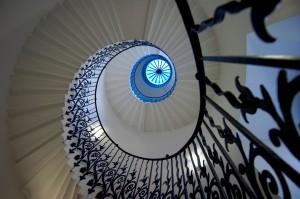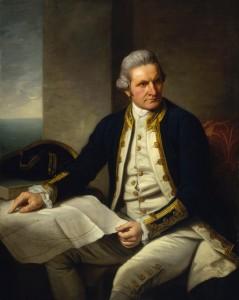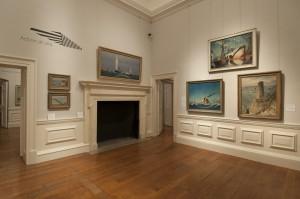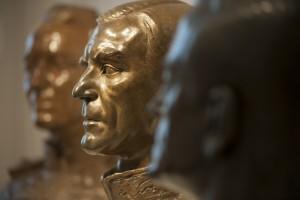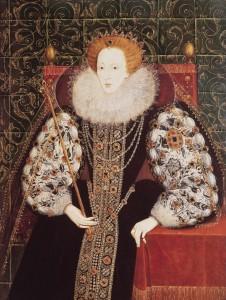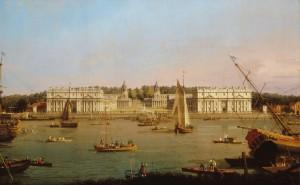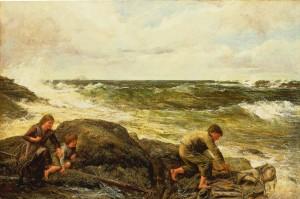22 Jul 2015
As we gear up for the refurbishment and redisplay of the Queen’s House for its 400th anniversary in 2016, we have just a few days to go before the house closes for 50 weeks. Here are the top 5 things you mustn’t miss if you are coming to Greenwich this week: Number 1 - the House in all its glory Since the first stone was laid to Inigo Jones’ design in 1616, the house has been one of the most important architectural sites in Britain. The first classical building in this country, it remains Jones’ masterpiece. Don’t miss the stunning original features: the Great Hall with its black and white marble floor, its design echoed in the carved ceiling above; the swirling spiral of the Tulip Stairs; the rich colours of the Queen’s Presence Chamber painted ceiling; the majestic view of the park from the Orangery, and much more.
Number 2: Unseen: The Lives of Looking by Dryden Goodwin The fourth installment of the Contemporary Arts Programme in the Queen’s House brings both filmed and drawn portraiture to bear on the histories of our sites. Dryden Goodwin follows in the footsteps of the Dutch marine artist Willem van de Velde the Elder, who worked in a studio off the Orangery. Dryden follows the lives of three modern individuals with a particular relationship to looking, observing their working lives in an intense panoramic film, and minutely detailed drawings. His work focuses on the history of looking that has always been central to Greenwich, from the van de Velde father and son onward.
[embed width="700"]https://youtu.be/SKMAQWC70X4[/embed] Number 3: The Art and Science of Exploration, 1768-80 Captain Cook’s three famous voyages to the Pacific resulted in some of the most mesmerizing art in our collections, responding to the new landscapes, climates, peoples and environments that the crews encountered.
Artists on and after the voyages adapted their training to portray these strange new worlds. See the sublime landscapes of William Hodges, the beautifully detailed botanical prints made after Sydney Parkinson’s drawings, and the first painting of a dingo in European art, by George Stubbs.
Number 4: War Artists at Sea During both conflicts, British artists recorded the events of the First and Second World Wars for posterity, propaganda purposes, as well as boosting morale at home and at the front. Leslie Cole’s painting of industrious war effort contrasts with Richard Eurich’s striking view of ruins in Portsmouth during the Blitz. Norman Wilkinson and Charles Pears depicted actions and sea, while John Everett concentrated on merchant ships covered in dazzle camouflage.
As an official war artist and lieutenant in the Royal Naval Volunteer Reserve, Stephen Bone gave the public a sense of everyday life on board submarines and aircraft carriers. At turns moving or inspiring, the portraits by Ambrose McEvoy, Charles Wheeler and John Worsley reveal the human face of war.
Number 5: Then of course there’s the world-class art collection Before we close for a year, come and see our outstanding collection of art displayed across the Queen’s House galleries. There are arresting examples of portraiture, from royal figures such as the Queen Elizabeth, Anne of Denmark and Henrietta Maria, to famous courtiers (we cannot resist Sir Peter Lely’s portrait of Flagman Harman) and of course, the House’s architect, Inigo Jones.
The collection also includes beautiful vistas, such as Canaletto’s charming View of Greenwich from the 1750s or Dominic Serres’ Piazza at Havana.
Canons are roaring and clouds of smoke are billowing in battle scenes from van de Velde the Elder and Younger to Richard Eurich. More unexpected, perhaps, is the presence of children on the canvases displayed across the galleries: in Andrew Morton’s United Service, a young girl listens intently as Greenwich Pensioners guide their Chelsea counterparts through the Naval Gallery in the Painted Hall, and James Clark Hook’s Catching a Mermaid contrasts innocent games to the menace of the raging seas.
Please check opening times before your visit on our website. The Queen's House closes from 27 July 2015 and will reopen to the public in 2016.
